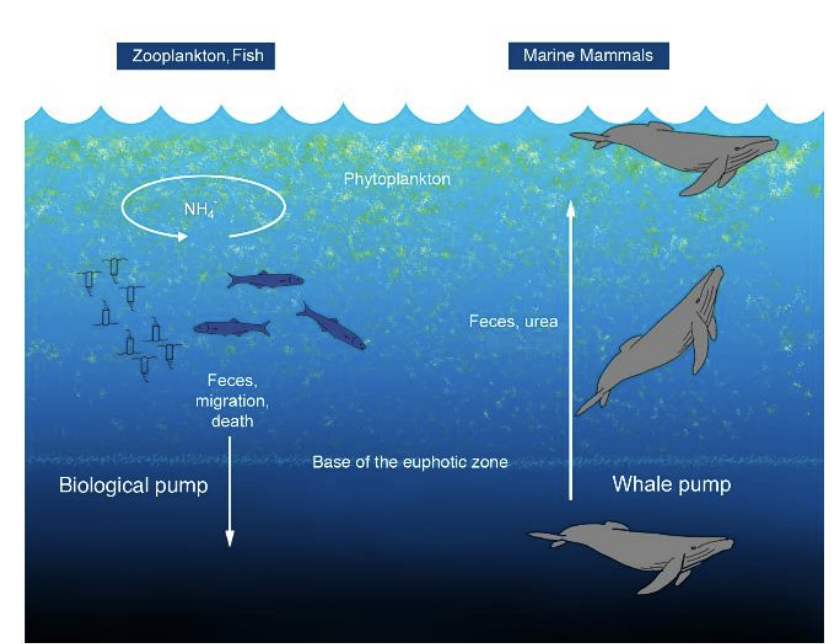Global Change LECTURE 1- The past
1/38
There's no tags or description
Looks like no tags are added yet.
Name | Mastery | Learn | Test | Matching | Spaced |
|---|
No study sessions yet.
39 Terms
How have we negatively impacted other psecies and habitats
harvesting themat at a higher rate than their populations could withstand
Converting natural habitat to human-dominanted land uses
Through tansporting and releasing species to new locations
consequences→ marked incrase in extinction rates
Despite losses and turnover of species
biology diversity has generally increased over time
But punctuated by 5 mass extinction events
→ at about 0.1→ 1.8 extinctions per million sepcies yesrs
Humans are super-predators?
killing far more prey population
larger bodied species at higher trophic levels
killing more adults
→ than other predators
OVERAL can cause extinctions due to
Outcompeting megafauna
Hunting lots of megafauna
Affecting habitats: agriculture→ loss of land
Other things→ invasive species and disease
Causing climate chnage themselves
Consequence of this?
→ The megafauna
End-Pleistocene/early Holocene extinction of 2/3 species >44kg in mass
→ cause not fully understood
What did this cause?
substantiaal climatic and vegetation change
→ BUT extinction wave happened at different times on different land-masses
arrival of sophicicated hunts fit more closely than does climate change
with this staggered chronology loss
E.g 1 Evidence 1
End-Pliocene extinction of many African proboscideans
and large carnivores
→ Coincides with emergence of Homo eretectus
found there was no loss of smaller species→ therefore cannot be an ecological cause
E.g 2 Evidence 2
INdianan lake sediments show decline of N American megafauna
due to lower counts of spopomiella (large mammal fung fungus)
→ This preceeded the rise of fire and change in vegetation by 1Ky
Coincided the first signs of people
E.g 3 Evidence 3→ Mass butchering sites in New Zealand
unequivical evidence that polynesian settles
responsible for eliminating all 9 spp of moas in 150y
Overall
global picture confirsms consistently close match
between timing of megafaunal extinction on different landmasses
→ and the first arrival of people
Confirms that the mass extinction were not due to climate change
because they affected different places at different times
but the timing do match the migration of humans across the world
ALSO: supported by the fact the these large animals were not affected by any other past ecological changes
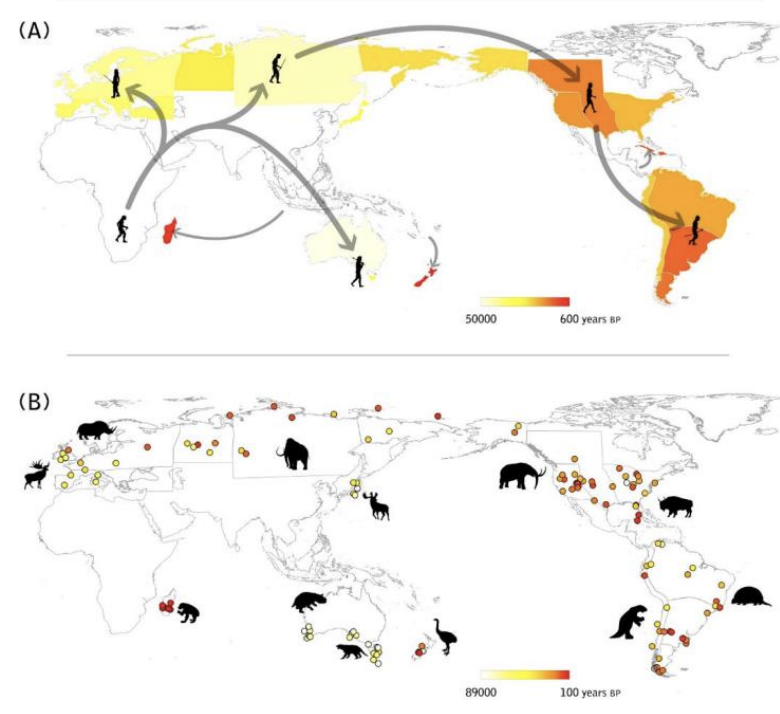
Habitate loss
Loss of habitat due to
fire in hunting
agriculture
11 independent centres of crop and livestock domestication
→ more dramatic changes as habitats were cleared for food production
shifting cultivation gave way to continuous agriculture
If early yields were low…
By 1800 farming had already removed large areas of natural vegetetion on almost all continents
Another effect of agriculture?
rise in CO2 and CH4 emissions
from irrigated rice production
→ climate heating
Invasive species
inadvertently and deliberately tansported other species
relased them far beyong their native ranges
e.g 150 spp in british flora are archaeophytes
plants introduced by people before 1500 AD
example 2→ Beetles
Greenlland species of beetles
introduced by nors settles
Example 3 possums
People moved several species of cuscus→ large possums
to islands around New Guinea
for food
23k years ago
Example 4→ alen plants
now causing problems in Australia
introduced in the first century
folloiwng european arrival
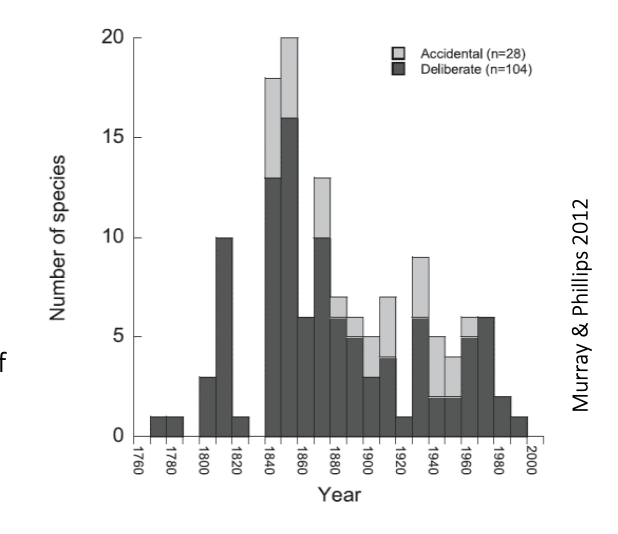
How do invasive species impact native communities? E.g Species from the Red Sea to mediterranean (due to Suez canal)
Some outcompete natives→ e.g gold band goatfish
parasitise native species→ e.g copepods
major ecosystem disruption (dusky spinefish grazing down algal beds and exposing the substrate to colonisation by non-native mussel)
Consequences→ largest hit species
large bodied vertebrates
largest trrees
(the rest have changed in abundance)
Impact of affecting larger bodied vertebrates
They have a larger ecological impact
So when extinct→ causes even more consequences
ecosystems get messed up too!
Case Study 1: Amazon facts
basin drained by the world’ largest river
80% covered by largest and most species-rich rainforest on Earth
Case Study 1: What did the uplift of the Andes do?
Amazon used to drain into pacific
uplift of Andes blocked it→ vast inland late
broke through to Atlantic
Case Study 1: Impact of people
End of Pleistocene→ lost most megafauna
limited fossil evidence (so not sure why?)
ut chronology suggests due to humans
Habitat conversion
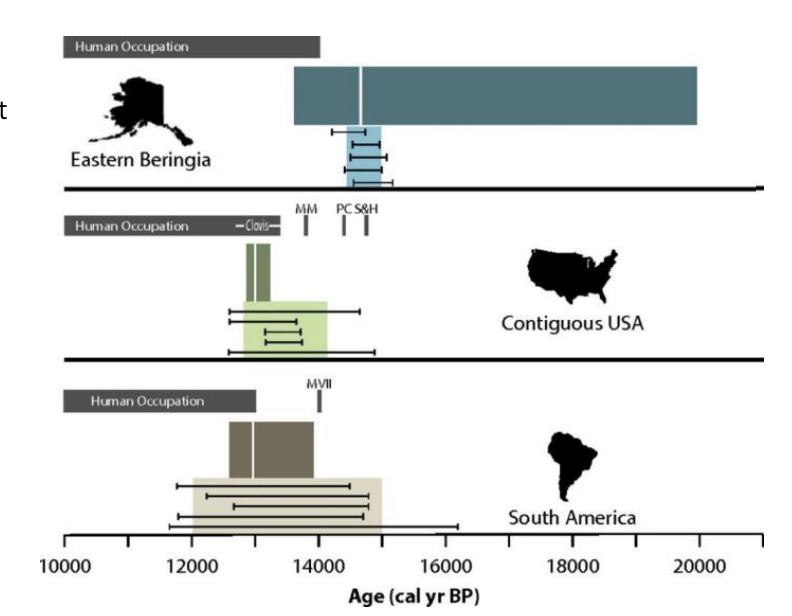
Case Study 1: 1. What has loss of megafauna led to?
Left several ecological signals
Reduction in large-scale dispersal of nutrients (e.g Phosphate)
decrease in vegetation openess
reduced dispersal of large-seeded fruits
forest-wide carbon storage→ trees with bigger seeds→ desnser wood)
Case Study 1: 2. Habitat conversion
Evidence of
wide spread dom crops
burning of soil
Suggest
agriculture was widely practised across the Amazon
Case Study 1: 2. WHere was the agriculture?
mainly around rivers
more easonal SW
→ suggests the basin was not extensievly converted
Case Study 1: 2. Agriculture stoppped?
Stopped during the Columbian Exchange
import or European technologies but also
exposure to diseases→ small pox, measles, flue, plague
Impact:
people died
farm abandonment
forest recovery (explains why look like not cultivated)
→ OVERAL: decrease in CO2 level→ Little Ice Age
Case Study 1: What happened next?
Human populations slowly recovered
But then
Rubber boom→ fresh wave of colonisation→ meet rapidly rising global demand→ people enslaved for the rubber
Case Study 1: What did the end of the rubber boom cause?
promoting the rise of wide-scale commercial hunting again
Case Study 2: Mauritius Facts
second largest of the Mascarenes
1000km East of Madagascar
formerly covered almost entirely by evergreen forest
→ Many birds evolved flightlessness
BECAUSE lack of terrestrial mammalian predators
Case Study 2: Dutch party landing→ what they saw
dodos
raven parrots
two species of giant tortoise
fruit bats
stange palms
other pigeons and parrots
skinks
geckos
boas
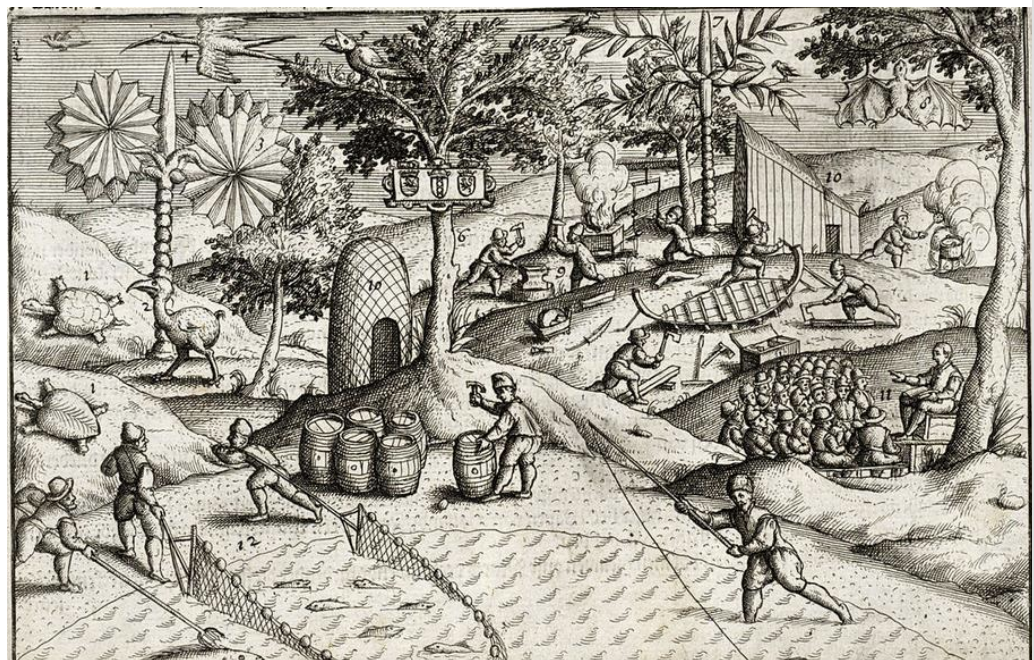
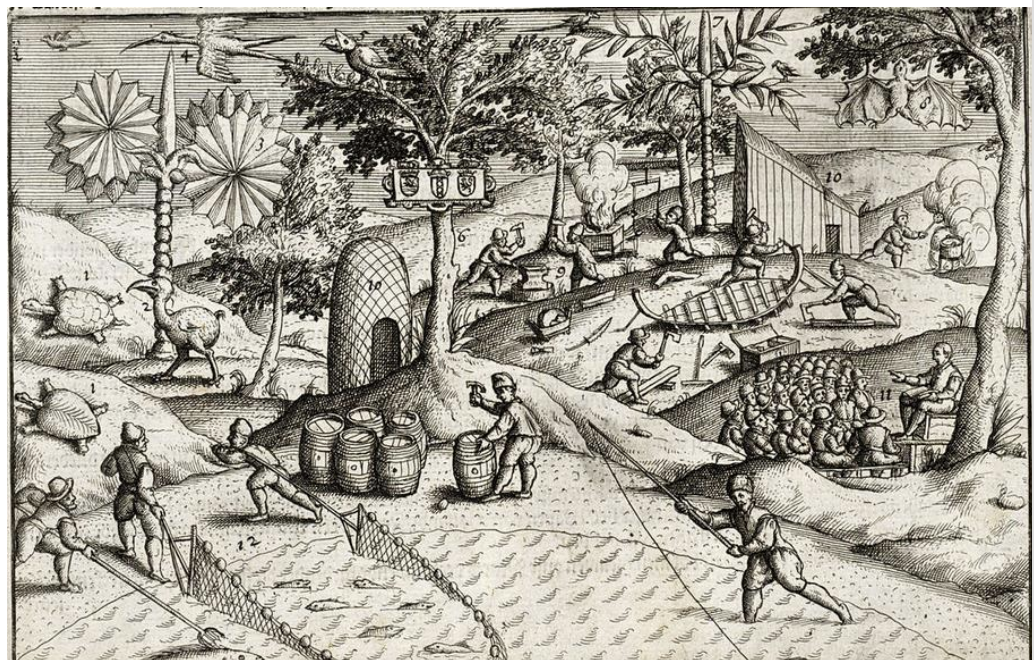
Case Study 2: Species numbers today?
35 out of 69 terrestrial vertebrate left
Case Study 2: Causes of this loss of species
Overhunting
tortoises, turtles, parrots, dugons and dodos
Invasive species
pigs (ate turtle eggs, tortoises, ground-nesting birds and dodos)
monnkeys (depredated nests in trees)
cats (ground nesting birds, young tortoises)
rates (probs ate all the snakes and larger skinks)
Case Study 2: Habitat loss?
Not much forest gone at the time→ so thats why most native vertebrate still there
BUT habitat loss accelerated in Frenech and British rule
for sugar
was resilent to cyclones
OVERALL: 1940s→ <10% native forest remained
Case Study 2: Further impacts?
Further introductions of invasive species
some used as biological controls of previous invasions
fledging conservation efforts were weakly enforced
Case study 2: Overall
Impacts
species loss
habitat loss
Causes
Invasive species
overhunting
agriculture→ sugar
More species for biological control of other invasive species
Case Study 3: The great Whales facts
e.g Baleen whales and sperm whales
largest whales
hunted for at least 8000y
meat
oil
baleen (for whalebone corests)
sspermaceti
Case Study 3: History of whaling
First large sclae by the Basques→ hunted across N.Atlantic
those that went inshore
1860s better technologies→ cannon-fired explosive harpoon and factory ships
Whaling much more efficient and wide ranging
1800→ 3.5 Million whales
1945→ 2.5 Million
→ greater reduction in biomass of arounf 40%
Case Study 3: Why does whaling have a massive impact?
Because they have profound ecological consequences
Case Study 3: Role of whales in ecosystems
Ecosystem engineers→ Whale pump in opposite direction to biological pump
Feed at depths
produce liquid feaces at the surface
rich in N and Fe
stimulate planktonic photosynthesis
therefore, plankton rely on whales to surive
Also move up and down in depths→
redistributing large quantities of nutrients via urea
Great Whale conveyor:
carcasses sink to the seafloor
shunting tonnes of C from the surface
sustaining highly specialised communites of whale-fall scavaneger
